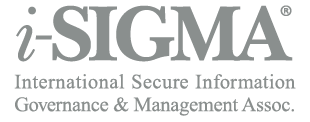Emerging Trends in the North American Data Destruction Market
January 28, 2016
This is the second of three articles on current aspects of the secure destruction market we face going into this New Year. The first published in this blog on Jan. 6, discussed the prosperity awaiting service providers assume a professional approach to their services and their marketing.
In this article, I want to elaborate a bit on trends I believe we will see gain momentum over the coming year in North America. I limit the discussion to North America, because the markets in other regions of the world face very different trends and opportunities.
Trend #1: The Professionalization of our Industry: Of course, I spend the entirety of Part 1 talking about this issue, and how service provider expertise and qualifications factor into it. So, rather than repeat myself, I’ll just say that if you haven’t read the first blog, you’re missing the BIGGEST piece of the picture.
But, if you already read Part 1, here are some other trends I see unfolding in North America….
Trend #2: Customers’ increasing reliance on certifications – for NEW reasons: Customers have been relying on service provider certifications for years. Up to now, however, it’s because they got peace of mind from it. But now they need more than peace of mind; they are required to make sure vendors are compliant with things like incident reporting, risk assessments, employee training, whistleblower and breach notification policies. That is the real value of certification and it leads to another trend that will emerge from it; customers will now be doing due diligence on the Certification Program as their primary vendor selection criteria. The number of calls and emails I get from customers asking if NAID Certification verifies compliance in one area of another has increased 5 fold in two years.
Trend #3: Particle size will become more of an issue: No data protection law on books specifies a particle size for paper or hard drive destruction. Instead, they state that particle size must be reasonable. And, while it is common knowledge among industry professionals that the closed-loop and large processing capacity of commercial services makes a larger size a reasonable solution for destruction, many customers don’t understand or accept that logic. Faced with increasing pressure due to data protection liability, they will increasingly be drawn into the particle size discussion. Some service providers will have the wherewithal to make those customers comfortable with the larger particle size, but many will not. Furthermore, there will be some service providers who actually want to encourage a smaller particle size as a market distinguisher. No matter where you are in the continuum, it is safe to assume industry professionals will be dealing with this issue more in the coming months and years.
Trend #4: Acquisitions will speed up: One or more large companies in the secure destruction arena are poised to grow through acquisition; in fact, you could argue they are under pressure to do so. As a result, it is safe to assume there will be renewed interest in acquiring good service providers. It is also reasonable to think that regional alliances could lead to mini-roll ups in an effort to create a more valuable acquisition target for those larger firms. It’s not rocket science; it would be very valuable to a large firm to do one deal of integrated operations than to do 15 separate deals with disparate operations. The only question on the speculation regarding mini-rollups is whether or not anyone has the wherewithal to pull it off.
Trend #5: Those in windshield markets will continue to do well: While the number of competitors in the continent’s metropolitan areas compete intensely, many service providers have built great businesses in rural markets; markets that, up until 10 years ago, could not even support a destruction business. Left unfetter while demand steadily increased, these farsighted prospectors have built solid businesses on good margins and continue to grow. Better yet, due to the nature of those markets, the territories are well defended and not attractive to new entrants. It was the same strategy Walmart used back in the day and it worked.
Trend #6: Customers will become more receptive to destroy-all programs: Many customers still give employees discretions on what should be destroyed and what can be tossed or recycled. Of course, it is very risky, even fool-hearty, to give every employee the ability to put the organization in jeopardy. The increase in data protection liabilities will result in management replacing employee discretion with a policy that requires all discarded information to be destroyed.
Trend #7: The quality of a service provider’s professional indemnification will become of increasing importance in the buying process: Clients are beginning to understand that transferring unlimited liability to the service provider is not in their best interest. However, as they realize the more sensible approach is to set a reasonable liability limit for which the service provider is indemnified, the quality of that indemnification becomes their new focus. The trend is well underway and will continue in earnest over the coming months and years.
That’s it for now. I’m happy to hear from anyone agreeing or disagreeing with me. I’ll be back soon with Part 3 on industry market trends around the world.

